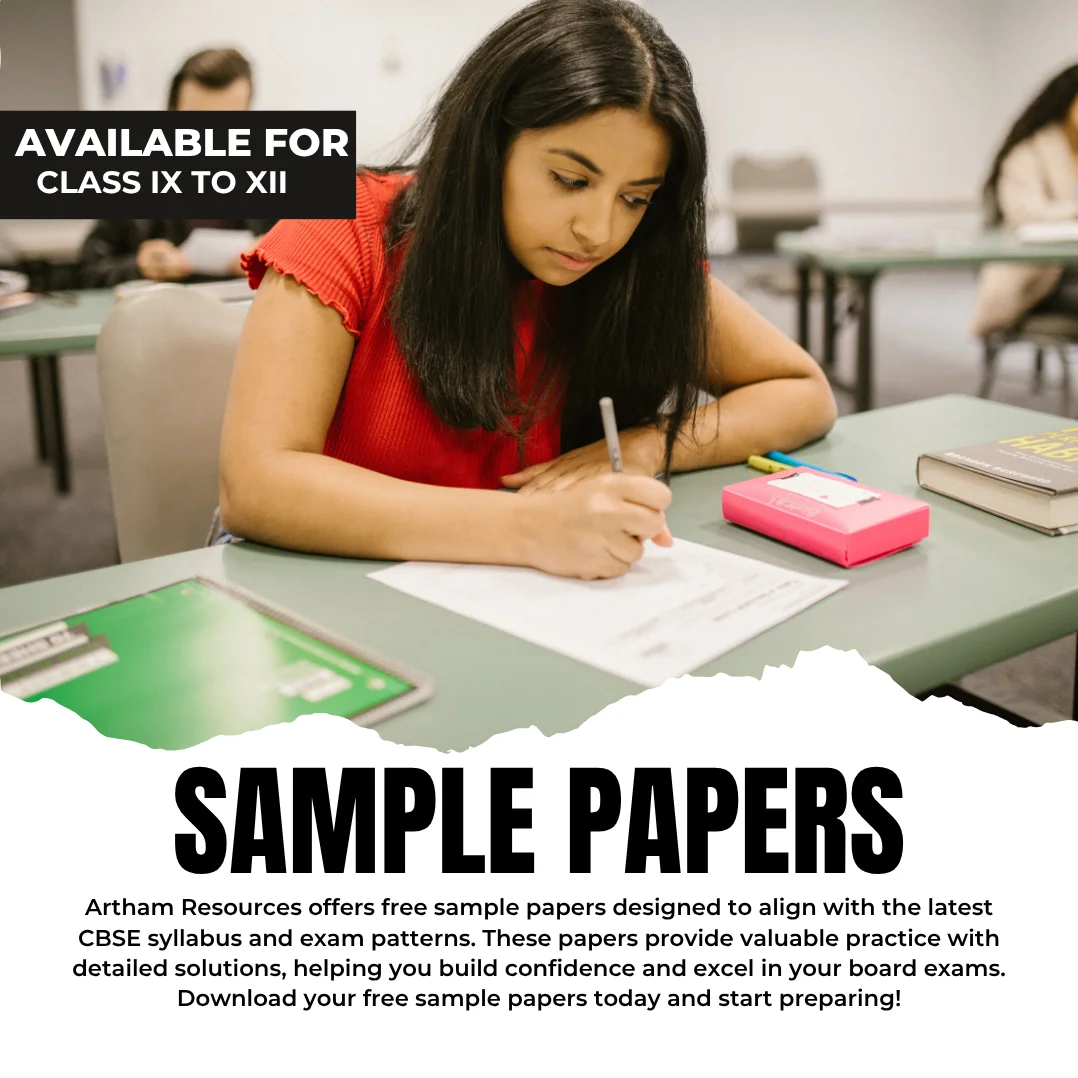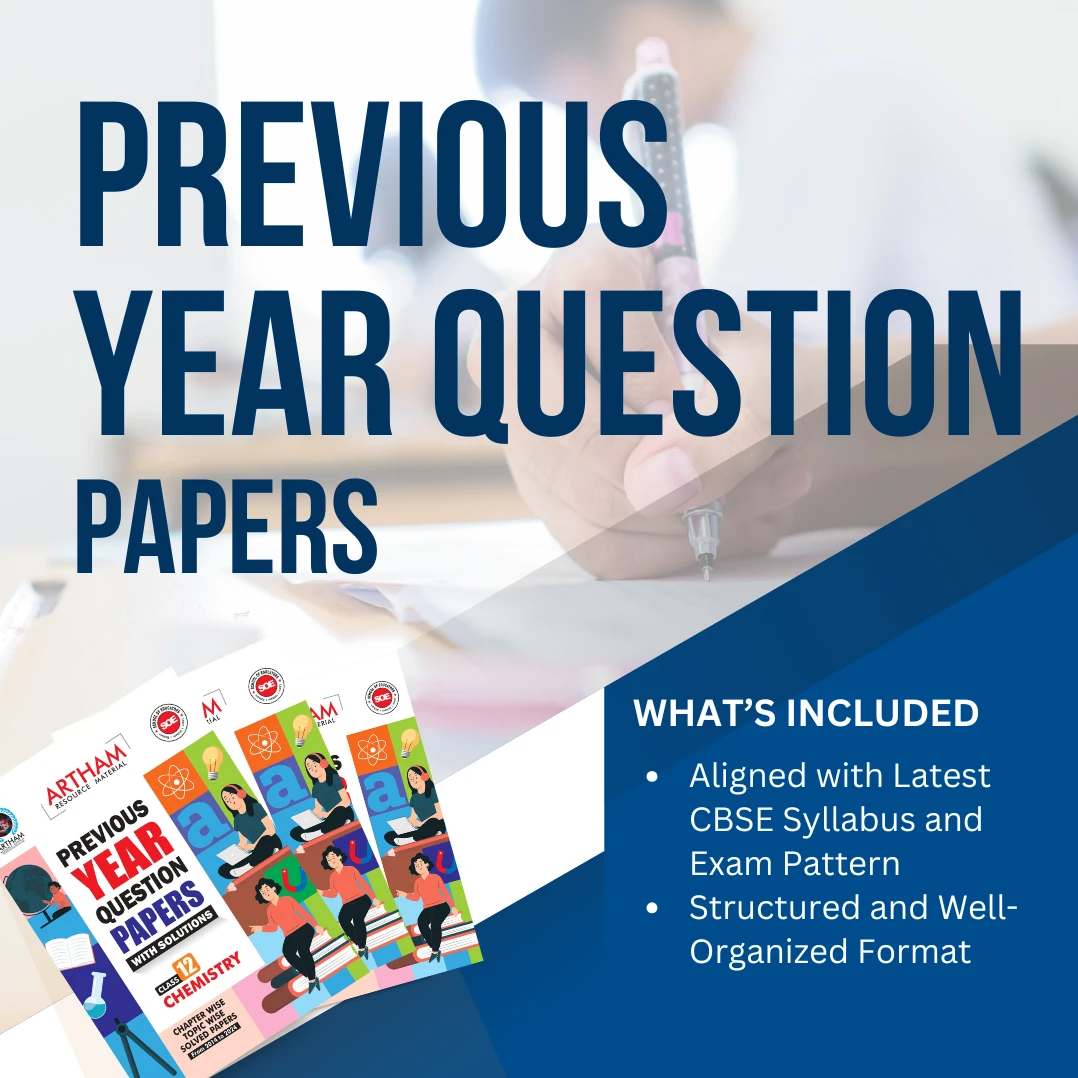Shop Left Sidebar
- CBSE
- Chapter Wise Topic Wise Notes
- Class 10
- Class 9
- Competency-Based Question Bank
- Competitive Exams & Aptitude Tests
- Comprehensive Viva Voice
- Courses
- CUET
- Daily Practice Paper (DPP)
- Diagnostic Assessment
- eBooks
- For New School
- Foundation and Olympiad Study Material
- Gift for Students
- Gift for Teachers
- Half Yearly Sample Question Paper with Solution
- Holiday Homework
- Illustrative Charts
- Journal
- Kindergarten
- Lesson Plan
- Life Skills
- Line by Line Questions
- Mind Maps
- Must Buy
- NCERT Exemplar Solutions
- NCERT Solutions
- Notes
- POWERPOINT PRESENTATIONS
- Pre Launch Stage
- Premium WhatsApp Group
- Previous Year Question Papers
- Previous Year Question Papers with Solutions
- Print version of SOP
- Sample Paper
- Sample Paper with Solutions
- Self Development
- Split -up Syllabus
- Sports and Physical Education
- Standard Operating Manuals
- Study Materials for Students
- Teachers Manual with Lesson Plans
Best seller
-
-100%
₹ 50.00Original price was: ₹ 50.00.₹ 0.00Current price is: ₹ 0.00. -
-100%
₹ 50.00Original price was: ₹ 50.00.₹ 0.00Current price is: ₹ 0.00. -
-100%
₹ 50.00Original price was: ₹ 50.00.₹ 0.00Current price is: ₹ 0.00. -
-100%
₹ 299.00Original price was: ₹ 299.00.₹ 0.00Current price is: ₹ 0.00.
- CBSE
- Chapter Wise Topic Wise Notes
- Class 10
- Class 9
- Competency-Based Question Bank
- Competitive Exams & Aptitude Tests
- Comprehensive Viva Voice
- Courses
- CUET
- Daily Practice Paper (DPP)
- Diagnostic Assessment
- eBooks
- For New School
- Foundation and Olympiad Study Material
- Gift for Students
- Gift for Teachers
- Half Yearly Sample Question Paper with Solution
- Holiday Homework
- Illustrative Charts
- Journal
- Kindergarten
- Lesson Plan
- Life Skills
- Line by Line Questions
- Mind Maps
- Must Buy
- NCERT Exemplar Solutions
- NCERT Solutions
- Notes
- POWERPOINT PRESENTATIONS
- Pre Launch Stage
- Premium WhatsApp Group
- Previous Year Question Papers
- Previous Year Question Papers with Solutions
- Print version of SOP
- Sample Paper
- Sample Paper with Solutions
- Self Development
- Split -up Syllabus
- Sports and Physical Education
- Standard Operating Manuals
- Study Materials for Students
- Teachers Manual with Lesson Plans
Showing 81–96 of 563 results
-
-62%
Lesson Plan Class 6 Mathematics Chapter 9 DATA HANDLING
₹ 50.00Original price was: ₹ 50.00.₹ 19.00Current price is: ₹ 19.00.This lesson plan covers Chapter 9 of the Class 6 Mathematics curriculum, focusing on “Data Handling.” The chapter introduces students to the basics of data collection, organization, representation, and interpretation. Students will learn about different types of data (qualitative and quantitative), methods of data collection (surveys, observations), and ways to organize data (tables, graphs, charts).
-
-62%
Lesson Plan Class 6 Mathematics Chapter 10 MENSURATION
₹ 50.00Original price was: ₹ 50.00.₹ 19.00Current price is: ₹ 19.00.This lesson plan covers Chapter 10 of the Class 6 Mathematics curriculum, focusing on “Mensuration.” The chapter introduces students to the concept of mensuration, which deals with the measurement of geometric shapes and figures.
-
-62%
Lesson Plan Class 6 Mathematics Chapter 11 ALGEBRA
₹ 50.00Original price was: ₹ 50.00.₹ 19.00Current price is: ₹ 19.00.This lesson plan covers Chapter 11 of the Class 6 Mathematics curriculum, focusing on “Algebra.” The chapter introduces students to the basic concepts of algebra, including variables, constants, expressions, and equations.
-
-62%
Lesson Plan Class 6 Mathematics Chapter 12 RATIO AND PROPORTION
₹ 50.00Original price was: ₹ 50.00.₹ 19.00Current price is: ₹ 19.00.This lesson plan covers Chapter 12 of the Class 6 Mathematics curriculum, focusing on “Ratio and Proportion.” The chapter introduces students to the concepts of ratio and proportion, including their definitions, properties, and applications in various contexts.
-
-62%
Lesson Plan Class 6 Social Science (Civics) Chapter 4 Panchayati Raj
₹ 50.00Original price was: ₹ 50.00.₹ 19.00Current price is: ₹ 19.00.This lesson plan for Class 6 Social Science (Civics) Chapter 4, “Panchayati Raj,” aims to provide students with a comprehensive understanding of the Panchayati Raj system in India. The lesson will introduce the structure and functions of the Panchayati Raj institutions, including Gram Panchayat, Panchayat Samiti, and Zila Parishad. Through interactive activities, discussions, and real-life examples, students will learn about the roles and responsibilities of elected representatives, the significance of local self-governance, and the impact of Panchayati Raj on rural development.
-
-62%
Lesson Plan Class 6 Social Science (Civics) Chapter 5 Rural Administration
₹ 50.00Original price was: ₹ 50.00.₹ 19.00Current price is: ₹ 19.00.The lesson plan for Class 6 Social Science (Civics) Chapter 5, “Rural Administration,” is designed to provide students with an in-depth understanding of the administrative setup in rural areas. This chapter explores the functioning of local government institutions, the roles and responsibilities of officials such as the Patwari and Tehsildar, and the significance of land records and revenue collection. The lesson includes activities that encourage students to engage with real-world scenarios, promoting critical thinking and problem-solving skills.
-
-62%
Lesson Plan Class 6 Social Science (Civics) Chapter 6 Urban Administration
₹ 50.00Original price was: ₹ 50.00.₹ 19.00Current price is: ₹ 19.00.In this lesson plan for Class 6 Social Science (Civics), Chapter 6 focuses on Urban Administration. Students will explore the structure and functions of urban local bodies, including municipalities and municipal corporations. The lesson aims to familiarize students with the roles of elected representatives, administrative officials, and the importance of civic participation in urban governance. Activities will include discussions on urban services such as water supply, waste management, and urban planning.
-
-62%
Lesson Plan Class 6 Social Science (Civics) Chapter 7 Rural Livelihoods
₹ 50.00Original price was: ₹ 50.00.₹ 19.00Current price is: ₹ 19.00.In this lesson plan for Class 6 Social Science (Civics), Chapter 7 focuses on Rural Livelihoods, aiming to educate students about the diverse economic activities in rural areas. The lesson explores various aspects such as agriculture, animal husbandry, and cottage industries, highlighting their significance in sustaining rural economies. Students will learn about the challenges faced by rural communities, including seasonal nature of work, lack of infrastructure, and access to markets.
-
-62%
Lesson Plan Class 6 Social Science (Civics) Chapter 8 Urban Livelihoods
₹ 50.00Original price was: ₹ 50.00.₹ 19.00Current price is: ₹ 19.00.This lesson plan for Class 6 Social Science (Civics) Chapter 8, “Urban Livelihoods,” aims to explore the dynamics of livelihoods in urban settings. Students will delve into the various occupations and economic activities prevalent in cities, understanding how urban areas sustain diverse livelihood opportunities. The lesson emphasizes the challenges faced by urban workers, such as informal employment and lack of social security, and encourages critical thinking about solutions to improve urban livelihoods.
-
-62%
Lesson Plan Class 6 Social Science (History) Chapter 1 what, where, how and when?
₹ 50.00Original price was: ₹ 50.00.₹ 19.00Current price is: ₹ 19.00.This lesson plan for Class 6 Social Science (History) Chapter 1 focuses on exploring fundamental historical concepts: what events occurred, where they took place, how they unfolded, and when they happened. Students engage in activities that help them understand the significance of historical events through interactive map exercises, chronological timelines, and group discussions.
-
-62%
Lesson Plan Class 6 Social Science (History) Chapter 2 From Hunting–Gathering To Growing Food
₹ 50.00Original price was: ₹ 50.00.₹ 19.00Current price is: ₹ 19.00.This lesson plan for Class 6 Social Science (History) focuses on Chapter 2: “From Hunting-Gathering to Growing Food”. It introduces students to the transition from hunter-gatherer societies to early agricultural practices. Key topics include the development of agriculture, its impact on settlement patterns, the domestication of plants and animals, and its significance in shaping early civilizations.
-
-62%
Lesson Plan Class 6 Social Science (History) Chapter 3 In The Earliest Cities
₹ 50.00Original price was: ₹ 50.00.₹ 19.00Current price is: ₹ 19.00.This lesson plan focuses on Chapter 3 of Class 6 Social Science, exploring the topic “In The Earliest Cities” in History. The objective is to introduce students to the concept of ancient urbanization, covering the earliest cities such as Mohenjo-Daro and Harappa. The lesson aims to engage students through interactive activities like mapping ancient cities, understanding urban planning, and discussing the daily life of inhabitants.
-
-62%
Lesson Plan Class 6 Social Science (History) Chapter 4 What Books And Burials Tell Us
₹ 50.00Original price was: ₹ 50.00.₹ 19.00Current price is: ₹ 19.00.This lesson plan for Class 6 Social Science (History) focuses on Chapter 4: “What Books And Burials Tell Us.” It explores the significance of books and burial sites as sources of historical information. Students will delve into how ancient books and manuscripts provide insights into past societies, their cultures, and knowledge systems.
-
-62%
Lesson Plan Class 6 Social Science (History) Chapter 5 Kingdoms, Kings And An Early Republic
₹ 50.00Original price was: ₹ 50.00.₹ 19.00Current price is: ₹ 19.00.Explore the vibrant history of ancient India through Chapter 5: Kingdoms, Kings, and an Early Republic in Class 6 Social Science (History). This engaging lesson dives into the rich tapestry of early Indian civilizations, focusing on the emergence of kingdoms, the roles of kings, and the evolution of republics. Students will journey through pivotal moments such as the rise of Magadha, the Mauryan Empire under Chandragupta Maurya, and the governance structures of early republics like Vaishali and Mallas.
-
-62%
Lesson Plan Class 6 Social Science (History) Chapter 6 New Questions And Ideas
₹ 50.00Original price was: ₹ 50.00.₹ 19.00Current price is: ₹ 19.00.This lesson plan for Class 6 Social Science (History), focusing on Chapter 6 “New Questions And Ideas,” aims to engage students in exploring pivotal historical shifts in human thought. The plan includes interactive activities to help students comprehend key concepts such as the Renaissance, Reformation, and Enlightenment.
-
-62%
Lesson Plan Class 6 Social Science (History) Chapter 8 Villages, Towns And Trade
₹ 50.00Original price was: ₹ 50.00.₹ 19.00Current price is: ₹ 19.00.Explore the historical development of villages, towns, and trade routes in ancient civilizations. This lesson plan for Class 6 Social Science (History) Chapter 8 delves into the evolution of human settlements, the growth of towns as centers of trade and culture, and the impact of trade routes on connecting distant civilizations.
Teaching is one of the hardest and most important jobs in the world. We provide the support that teachers need to transform their subjects into terms that their students will understand.
- Nageen International
- B-162, 4th Floor, DDA Shed, Okhla Industrial Area Phase 1 New Delhi-110020 (India)
- WhatsApp us at +91-95208-11111
- Email: info@educatorsresource.in
- (Monday to Saturday) WhatsApp 24*7
2025 Educator Resources. All Rights Reserved.




